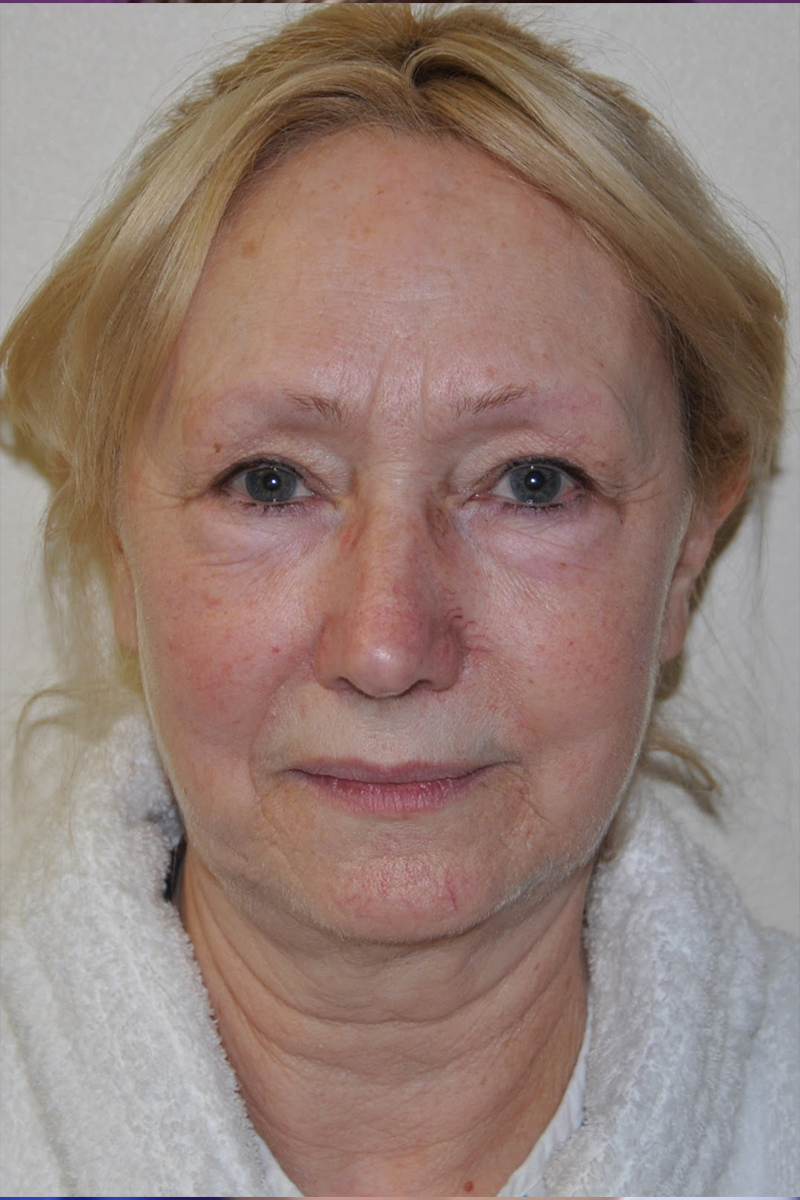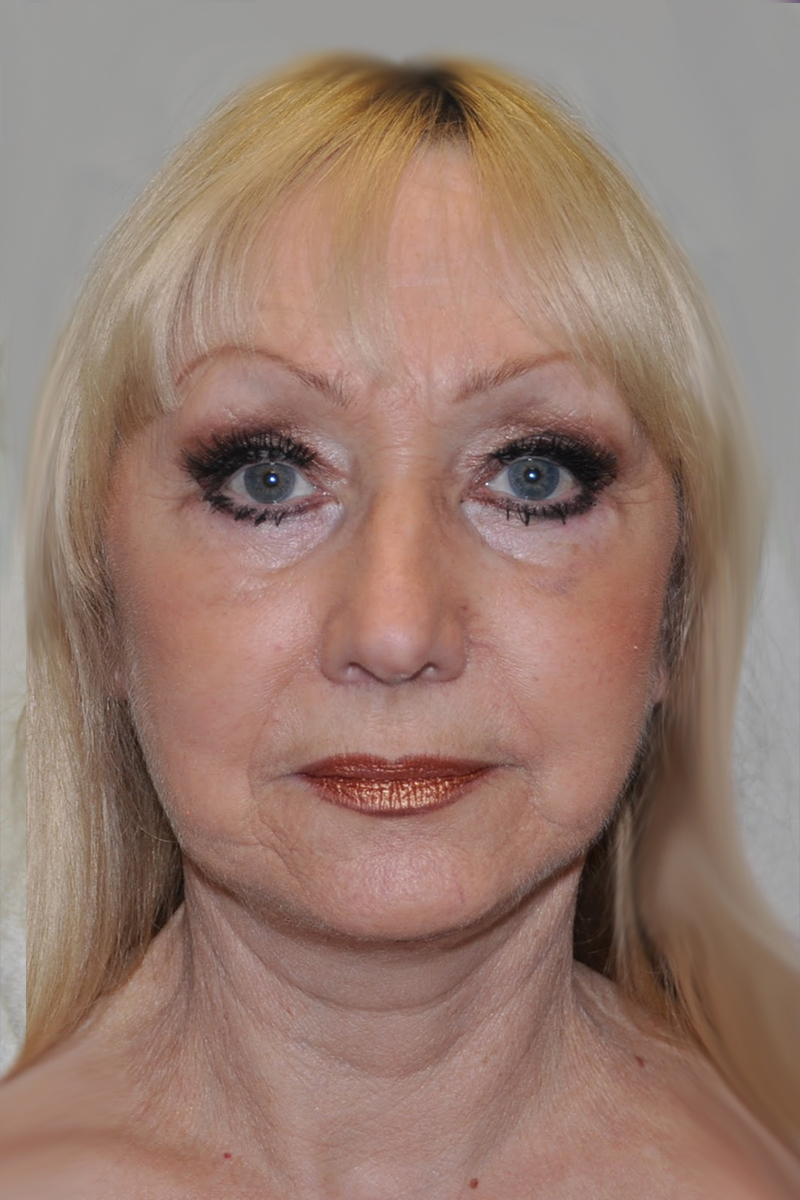Facelift
Botox and dermal fillers such as Restylane and Juvederm can help you reduce some of the signs of facial ageing, but often they are no substitute for a conventional surgical facelift. The results of dermal fillers may last anywhere from three months to a year, but a facelift’s rejuvenating effects can last more than ten years.
Obviously there really is no comparison between injectables and facelifts when it comes to their age-defying effects.
That said, it’s important to realise that facelift surgery is a surgical procedure with a downtime and recovery period and a more involved risk profile than injectables. Weighing the benefits and risks of a facelift is the best way to determine if it is the right facial cosmetic procedure for you.


Am I a good candidate for a facelift?
If your face is loose and sagging, you may be a candidate for a facelift. Age is not a barrier. Most people undergo facelifts between the ages of 50 to 65, but this is only the average age range. Many people as young as 40 and some older than 80 also opt for facelifts.
It helps to be at your ideal weight when you have your facelift. This can prevent the need for additional surgeries to remove excess skin should you subsequently lose weight. Remember that facelifts cannot stop the ageing process permanently. Nothing can.
Are there any risks and complications?
There will be some discomfort and there will be a degree of swelling after surgery that may take several weeks to fully subside. Any bruising should resolve in the first couple weeks after your facelift procedure and most patients are happy to return to work and normal activities at that point.
Any surgical procedure performed under a general anaesthetic carries some risk. These include infections, excessive bleeding, haematomas and seromas. There may be some damage to the facial nerves that should be temporary.
What results can I expect from my facelift?
Mr Afshin Yousefpour is skilled at positioning facelift scars where they will be hardly noticeable once healed.
A facelift procedure aims to reset the ageing clock, but is unable to stop it. The results of a facelift procedure should last up to your ten years although every patient ages at different rates.
The facelift consultation
If you are an appropriate candidate with realistic expectations, Mr Yousefpour will review your entire medical history. Be sure to tell him about all medications that you take on a regular basis. Other factors that will be evaluated during this consultation include your general health status, sun damage to your skin, tobacco and/or alcohol use.
During the first consultation you will get to know each other and will develop a rapport. Make sure that you clearly explain your ideas and concerns. You should not feel rushed during the initial consultation.
You also need realistic expectations about what a facelift can do for your face. The consultation is the perfect time to discuss those expectations with your surgeon. It’s sometimes helpful to bring a picture of what you have in mind, even one of yourself at a younger age. But keep in mind that ultimately he swill be working with what you have, so listen to his suggestions and opinions. It’s best to expect improvement, not a miracle.
Finally he will take you through the operation itself, hospital stay, average duration of recovery and possible complications.
He will develop a plan for your facelift based on your skin’s elasticity and your bone structure (a
strong jawline and well-defined bone structure are considered pluses). He will examine your hairline to plan incision placement. Sometimes other procedures are done with your facelift, such as brow lift or eyelid surgery. These and other options will be discussed during your consultation.
For example, certain injectables or facial implants may also help restore volume or correct contour problems in the face.
What does a facelift procedure involve?
He will take you through preoperative and postoperative instructions. If you smoke, quit as soon as possible. Smoking interferes with circulation and healing. It also causes wrinkles and premature ageing, both counterproductive to your facelift.
There are many variations in how a facelift is performed, and different surgeons have different styles and techniques. The types of facelifts vary in several important factors: type of incision, number of tissue layers treated, the area of the face that is targeted and the degree of invasiveness.
A facelift is usually performed as an overnight stay. The actual procedure can take anywhere from two-and-a-half to four hours depending on the extent of your lift and whether or not other procedures such as a brow lift are being performed at the same time.
During your facelift, you will be hooked up to devices that monitor your heart rate, blood oxygen levels and other vital signs. You may be given an oral sedative to help keep you calm and relaxed. An intravenous (IV) line will be started to keep you hydrated and provide a way to administer anaesthesia, antibiotics, and other medications if necessary.
In general, a facelift involves incisions in front of and behind the ear. These incisions may extend into the scalp. Once the incisions are made, your skin is separated from the underlying tissue, and the deeper layers are ‘lifted’. Mr Yousefpour may also tighten the muscles and/or perform liposuction to remove excess fat pockets in the neck and jowls. Any excess skin is either removed or repositioned.
After closing, he will apply a pressure dressing to your face and head to protect your wounds and help minimise swelling. This dressing may span from the top of your head to underneath your chin.
You are then awakened and brought into the recovery room where you will be observed for about one to two hours.
